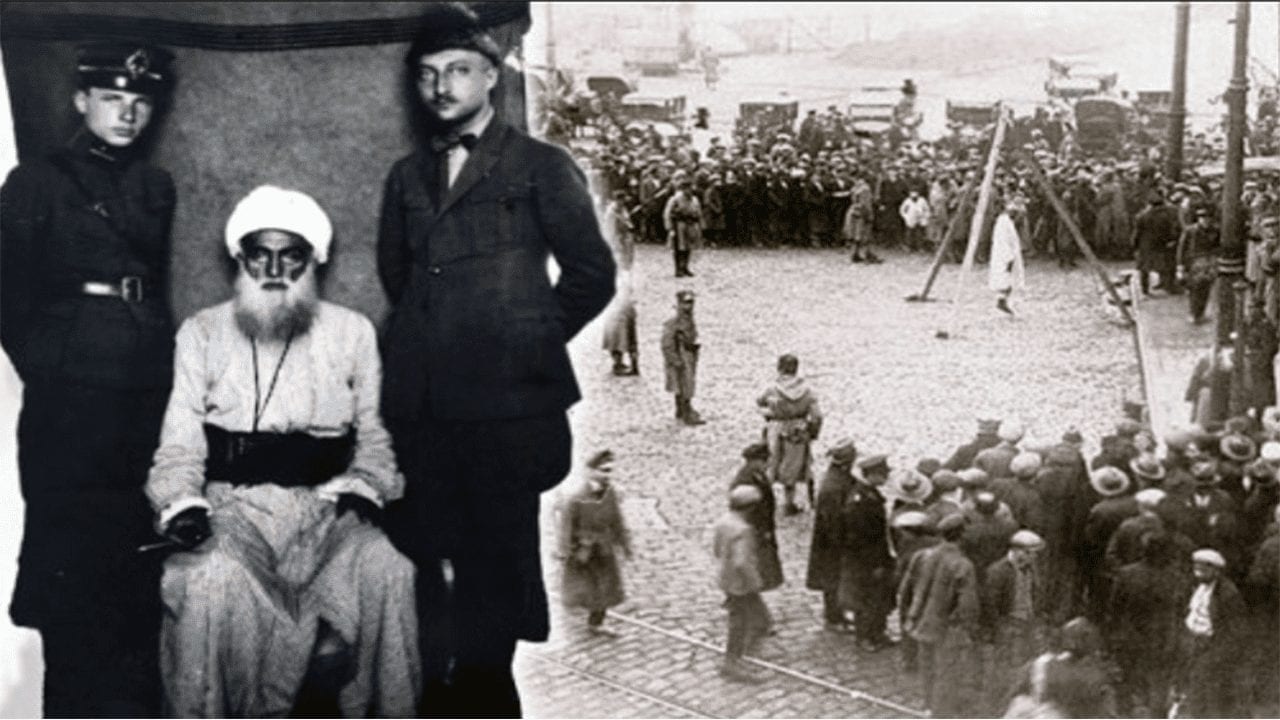Kurdish youth hung a banner on the Sheikh Said Tower in Diyarbakır’s (Amed) Sur (Sûr) district with the pictures of prominent historical Kurdish figures on Wednesday night. The banner included Sheikh Said, the leader of the Sheikh Said Rebellion who was hanged in 1925, Qazi Muhammad, an Iranian Kurdish leader who led the short-lived Republic of Mahabad, Leyla Qasim, a Kurdish activist against the Iraqi Ba’ath regime who was executed in Baghdad in 1974, Seyid Rıza, an Alevi Kurdish political leader, Musa Anter, a Kurdish writer, journalist and intellectual who was assassinated in 1992, and Nuri Dersimi, a revolutionary Kurdish intellectual. The banner also carried the slogan “I am Kurdish, I am immortal” (”Kurd im, nemir im”).
This act follows recent political discussions and tensions in Turkey. The polemic began when the Diyarbakır Metropolitan Municipality, which is currently under trusteeship following the dismissal of elected Kurdish mayors who were replaced by government-appointed trustees, announced the start of construction on Sheikh Said Boulevard and showed the progress on social media.
In response, some far-right critics, including Ümit Özdağ, the leader of the Victory Party, questioned the appropriateness of naming a boulevard after Sheikh Said, who was executed for leading a rebellion against the state. He remarked: “What state, after facing a rebellion in which hundreds of officers, soldiers and civilian officials were killed and finally sentencing a traitor to death, would name a boulevard after him in the city where he was hanged? If you wanted to build Sheikh Said Boulevard, why would you appoint a trustee? The HDP (Peoples’ Democratic Party) could have done it.”
In response to these criticisms, an official from the Diyarbakır Metropolitan Municipality stated that the name Sheikh Said was given to the boulevard 12-13 years ago by the Democratic Society Party (DBP)-led municipality, not the current government. The official insisted that the construction of the existing boulevard would continue, saying, “We focus on the service, not the name… The people of Diyarbakır know it that way”.
The documents revealed that it was Osman Baydemir, the mayor of Diyarbakır Metropolitan Municipality at the time, who gave the name Sheikh Said to the boulevard. Furthermore, a square in the province was given the name ‘Sheikh Said Square’ in 2014 with a council decision. The co-mayors at the time were Gültan Kışanak and Fırat Anlı.
Cihan Aydın, the former president of the Diyarbakır Bar Association, revealed that at the time, the co-mayors of the Diyarbakır Metropolitan Municipality were under investigation for using the name Sheikh Said.
Aydın condemned the politicisation of the issue and said: “It is a shameful situation to exploit this issue for political gain before the upcoming local elections and to make immoral, aggressive and unfounded statements about the memory of Sheikh Said. The Kurdish people will express their democratic reaction when the time comes. This issue is one of the most striking examples of the double standards of the regime and the judiciary towards the Kurdish communities. While Kurds are put on trial over the name of Sheikh Said, the regime is trying to gain political capital from it.”
The Turkish government is currently seeking the extradition of Baydemir, a Kurdish politician and human rights defender who served as mayor of Diyarbakır from 2004 to 2014 and is currently living in exile in Europe. In addition, former co-mayors Gültan Kışanak and Fırat Anlı were arrested in October 2016 on charges of attempting to secede part of the territory under state sovereignty.
 The Sheikh Said rebellion (Serhildana Şêx Seîd) marked the first significant Kurdish uprising against the newly-formed Turkish Republic following the signing of the Treaty of Lausanne in 1923. Historian Robert W. Olson described it as “the first large-scale nationalist rebellion by the Kurds”.
The Sheikh Said rebellion (Serhildana Şêx Seîd) marked the first significant Kurdish uprising against the newly-formed Turkish Republic following the signing of the Treaty of Lausanne in 1923. Historian Robert W. Olson described it as “the first large-scale nationalist rebellion by the Kurds”.
The rebellion was met with a forceful response from Turkish authorities. They utilised continual aerial bombardments and concentrated military forces to suppress the revolt. In the aftermath, more than 7,000 individuals faced prosecution through independence tribunals, and over 600 people were executed.









